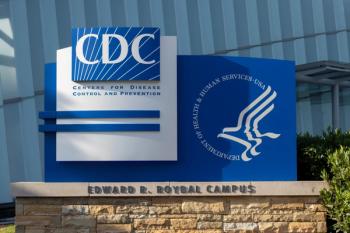
Children Exposed to Debris from 9/11 Attacks Show Early Risk of Heart Disease
The terrorist attacks from September 11, 2001 on the World Trade Center continue to have widespread health effects on those exposed to the debris.
Children who lived near the World Trade Center in New York City during the September 11 attacks in 2001 may face a greater risk of heart disease due to toxic chemicals and debris released into the air, according to an article published by Environment International. While the mental health effects have been widely reported, the health effects of the attacks are less well-known.
"Since 9/11, we have focused a lot of attention on the psychological and mental fallout from witnessing the tragedy, but only now are the potential physical consequences of being within the disaster zone itself becoming clear," said study lead investigator Leonardo Trasande, MD, MPP.
Included in the study were blood tests of 308 children, along with 123 participants who possibly came into contact with the debris on 9/11 and who were enrolled in the World Trade Center Health Registry. The registry tracks the physical and mental health of 2900 children who lived near or attended school in Lower Manhattan during the 9/11 attacks.
The authors found that children exposed to high levels of chemicals in the dust were found to have higher levels of artery-hardening fats in their blood compared with other children, according to the study.
The authors report that this study is the first to suggest children who were exposed to the debris may be at risk of
These findings may be the result of exposure to perfluoroalkyl substances (PFAs), which are chemicals that were released into the air as electronics and furniture burned during September 11. PFAs also include perfluorooctanoic acid (PFOA), which was commonly used in plastics until it was discontinued in 2014 due to adverse health effects, such as low birth weights and brain damage, according to the authors.
The investigators discovered that children possibly exposed to the debris had substantially higher blood levels of PFOA compared with children not living or going to school in Lower Manhattan during the September 11 attacks, according to the study.
Additionally, the authors found that every threefold increase in PFOA levels was linked to a 9% to 15% increase in blood fats. Elevated fat levels in the blood—including LDL cholesterol and triglycerides—are known to increase the risk of heart disease and heart attack.
Despite these concerning findings, the authors report that the early signs of heart disease could be controlled through diet, weight control, and exercise, according to the study.
"Our study emphasizes the importance of monitoring the health consequences from 9/11 in children exposed to the dust, and offers hope that early intervention can alleviate some of the dangers to health posed by the disaster," Dr Trasande said.
Newsletter
Stay informed on drug updates, treatment guidelines, and pharmacy practice trends—subscribe to Pharmacy Times for weekly clinical insights.




















































































































































































































